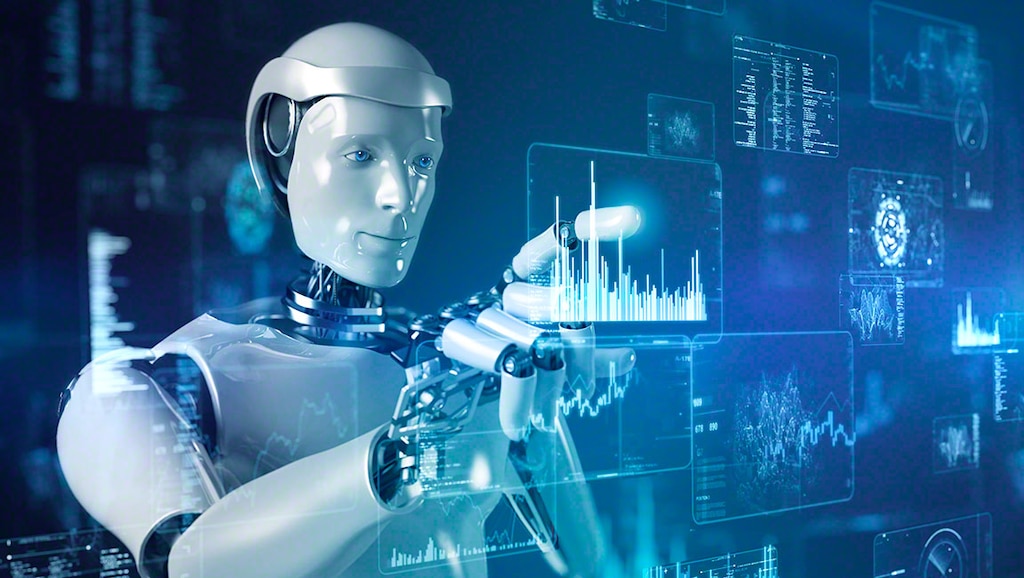
AI vs. ML: Differences and applications in business
Artificial intelligence (AI) and machine learning (ML) have become part of everyday life. We can see this in, for example, virtual assistants on smartphones and content recommendations on streaming platforms. Both technologies are transforming how we interact with the digital world and revolutionizing industries such as logistics, healthcare, and marketing.
Are AI and ML the same?
AI and ML are often confused, particularly in the context of digital transformation in business. However, they differ in terms of scope and applications.
- AI. IBM defines AI as “technology that enables computers and machines to simulate human learning, comprehension, problem-solving, decision-making, creativity, and autonomy.” It’s a field of computer science focused on creating systems capable of performing tasks that typically require human intelligence, such as voice recognition, decision-making, and understanding natural language. AI allows computers to simulate human reasoning when learning new information and making decisions.
- ML. Machine learning is a branch of AI that uses algorithms to enable machines to learn and improve autonomously from large datasets, identifying patterns to solve problems. According to consulting firm Gartner, ML “is a purely analytical discipline. It applies mathematical models to data to extract knowledge and find patterns that humans would likely miss.”
What is the main difference between AI and ML?
Artificial intelligence and machine learning are interconnected concepts: ML is a discipline within AI.
Artificial intelligence replicates human thought processes to perform tasks such as analyzing, reasoning, and learning. ML, on the other hand, employs algorithms trained on data to create models capable of executing complex tasks.
The relationship between AI and ML can be summed up as follows: AI aims to create intelligent machines that fulfill tasks like humans, leveraging ML techniques to achieve this goal.

What are the similarities between AI and ML?
The terms AI and ML are often used interchangeably. While they are distinct concepts, they share certain aspects:
- Purpose. AI and ML both aim to create systems capable of doing tasks that generally require human intelligence.
- Data. The two rely heavily on extensive data to function and improve their performance.
- Automation. This is a key component in AI as well as ML, enabling machines to carry out tasks with minimal human intervention.
- Applications. AI and ML have applications in a vast array of fields and sectors, including medicine, finance, and transportation.
How are AI and ML connected?
The relationship between AI and ML is bidirectional:
- AI subfield. ML techniques fall under the umbrella of AI. But not all AI techniques are ML.
- Theoretical foundation. ML drives advancements in AI. Breakthroughs in deep learning, a subset of ML, have led to major milestones in AI, such as speech recognition and computer vision.
- Symbiosis. Many modern AI systems rely on ML to improve performance. For example, an AI system for speech recognition might use ML models to learn and adapt to different accents and dialects.

How can organizations apply AI and ML?
Organizations can leverage AI and ML to optimize their operations and gain a competitive edge:
- Task automation. This frees up employees handling repetitive tasks so they can focus on more strategic work. Chatbots can be used to respond to frequently asked questions.
- Decision-making. AI and ML analyze copious amounts of data and generate insights to assist decision-making. For example, a logistics company can leverage ML to analyze shipping data and identify patterns that streamline delivery routes.
- Customization. AI and ML are used to personalize products, services, and individual customer experiences. For example, an online store can employ ML to recommend products to consumers based on their purchase history.
- Cost reductions. AI and ML can cut costs by automating tasks, improving efficiency, and reducing errors. Through demand forecasting, companies adjust their inventory levels and avoid overstocking.
AI and ML in digital transformation
Despite their differences, AI and ML share a common goal: to create intelligent systems by using data and algorithms to automate complex tasks. The symbiotic relationship between these technologies allows organizations to improve operational efficiency, predict behaviors, and optimize processes across multiple industries. In an increasingly digitalized world, applying AI and ML can provide a competitive advantage to thrive in the future.
At Interlake Mecalux, we incorporate the latest technological advances into the intralogistics solutions we develop. For instance, our picking robot integrates AI into the control system (SIMATIC S7-1500) to perform this order fulfillment process autonomously and accurately. Contact us if you’re thinking about automating your warehouse.
